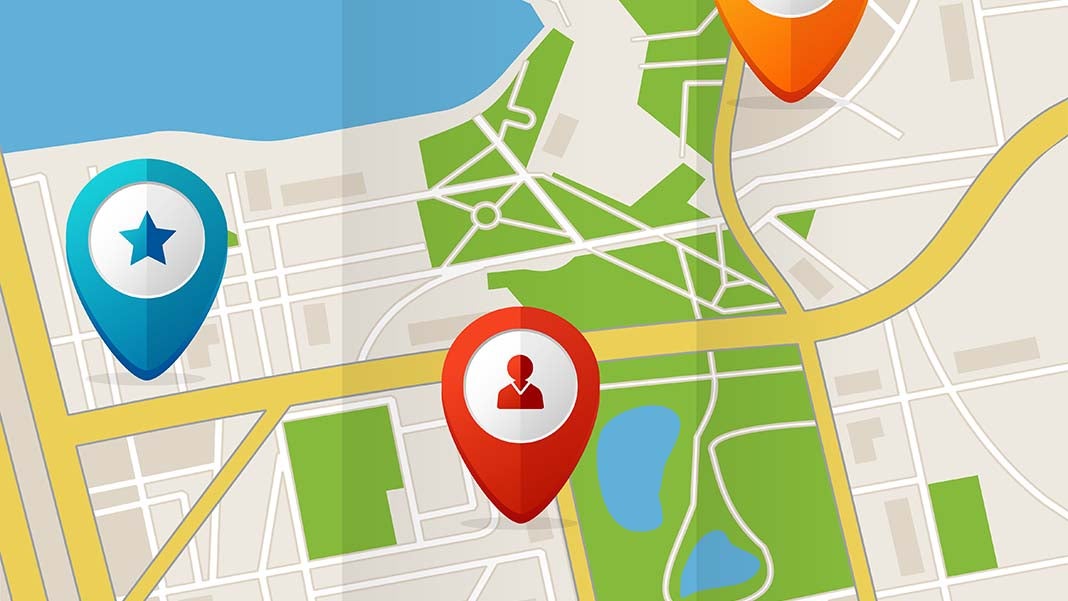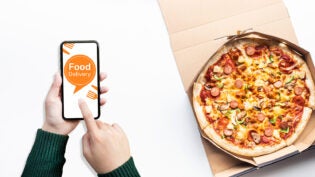What is Proximity Based Marketing?
By: Chris Horton

As mobile continues to hit the mainstream, our approaches to information discovery are rapidly evolving along with our buying habits. A recent study conducted by IDC Research and YP found that only 36% of online desktop and mobile users initiated a local business search on a traditional search engine. Moreover, approximately 80% of study participants said they own smartphones, a figure which roughly mirrors overall US smartphone penetration.
Today’s smartphone-toting consumers are relying on new ways to find local businesses, which may include recommendations from social networks, customer reviews social-local apps like Yelp, retargeted ads from business websites previously visited, and increasingly, opt-in push notifications containing mobile coupons and promotions triggered by beacons and geofences from nearby businesses.
Welcome to the new era of proximity based marketing.
Proximity Based Marketing Defined
Proximity based marketing (aka proximity marketing) is a catch-all term used to describe any use of location technologies to directly communicate with customers through their mobile devices. Importantly, this communication is not limited to smartphones— it applies to any GPS or Bluetooth-enabled device (i.e. laptop, tablet, even some feature phones).
Anchored in a recognition of the mobile-centric—or better yet, omnichannel—browsing and buying habits of today’s digitally adept consumer, proximity based marketing is all about serving up marketing solutions that are contextually relevant, multi-dimensional, and personalized. It seeks to blur the lines between the physical and digital world to create truly seamless user experiences that provide relevance and value.
In this way, proximity based marketing represents the next iteration of digital marketing in general, and inbound marketing in particular.
Its Role in Inbound Marketing Strategy
Inbound marketing upends the internal-facing focus on sales, marketing, and product toward an external-facing focus on strategic decision-making based on the wants and needs of the customer. This customer-centric approach allows brands to achieve greater sales and marketing efficiency, effectiveness, and growth in the digital age.
The principal driver of inbound marketing strategy is the relentless commitment to creating relevance and value for your prospects and customers. Context creates relevance; relevance creates value. If I deliver the right message or offer to you in the right place at the right time (context), it has a greater chance of being relevant. If it is relevant, it has a greater chance of being of value. Seldom will you find relevance without context, and value in the absence of relevance.
Proximity based marketing offers a number of tools and techniques that enable you to deliver relevance and value to your target audience. It helps you attract nearby prospects who are interested in your product or service in a contextually relevant way. In this sense, it is the real-world equivalent of online SEO.
Popular Techniques
As I just noted, proximity based marketing is all about relevance and value. The goal is to connect with nearby prospects and consumers to provide relevant, targeted coupons, promotions, and other offers that are considered valuable enough to ultimately drive conversion actions. The following popular techniques—near-field communication (NFC), geofencing, beacons, social check-Ins, and retargeting—promise to do just that.
Near-Field Communication
According to Google, 82% of smartphone users turn to their phones inside a store when making purchase decisions. With a wide-ranging set of applications for businesses, proximity based marketing technologies like near-field communication offer the ability to bridge the gap between the online and in-store shopping experience.
The most commonly understood application of NFC technology in retail lies in the arena of mobile payments. Digital wallets and NFC mobile payments allow customers to use their smartphones to pay online with their saved credit card information, or simply tap and pay when in store.
Thanks to the meteoric pace of global smartphone adoption, coupled with Apple’s entry into the NFC mobile payments market via the iPhone 6 and Apple Pay, NFC mobile payments are expected to enjoy rapid growth in coming years. Research firm Gartner forecasts that the value of NFC-generated mobile payments will rise sharply from the $5 billion realized in 2013 to almost $22 billion by 2016.
While NFC is commonly associated with mobile payments, the technology offers additional marketing applications for businesses.
As early as 2012, UK luxury retailer Burberry introduced NFC’s radio-frequency identification in their flagship store in London. By attaching NFC chips into product tags and outfitting stores with digitally-enhanced mirrors, Burberry was able to literally enhance the shopping experience: customers trying on an item near a mirror were able to see how the garment was hand-crafted or how it was worn on the runway, displayed on the mirror. A similar experience was implemented at other locations, although in this case the images would appear on the customer’s mobile device rather than on the store’s mirrors. Part of Burberry’s Smart Personalisation campaign, this promotional video offers a glimpse into the highly-unique in-store experience.
Admittedly, we’re still in the early days of NFC adoption for retail. In the years ahead, you can count on NFC to play an ever-expanding role in shaping the customer experience.
Geofencing
With geofencing, a business can use customer location as a data point to send customized offers that are more relevant to the customer, and therefore, more likely to convert for the business.
You may be wondering how it works. A geofence is a virtual perimeter or “fence” established around any physical space. Businesses use geofencing to trigger an action within this geographic boundary.
Generally speaking, there are three types of geofencing action triggers:
- Static – based on a user’s position relative to a fixed area
- Dynamic – based on a user’s position relative to changing data stream
- Peer-to-Peer – based in a user’s position relative to other users
An example of a static action trigger would be a special offer sent by SMS text message to opt-in users as they enter a shopping mall; a dynamic action trigger would be an “open parking space” notification sent to nearby mobile app users driving in a downtown area; a peer-to-peer action trigger would be a check-in notification of nearby friends on a social mobile app like Yelp, Facebook, or Foursquare.
Any business considering geofencing must first decide whether to go with an app-based or network-based solution.
App-Based Geofence
As the name suggests, the centerpiece of an app-based geofence solution is a mobile app that accesses mobile user locational data via GPS. Businesses going this route must first build the mobile app and then get it listed in the major app stores (or contract with a company that provides these services) where customers can download it.
Here’s the catch: for the app-based geofence to work, the business’ app has to be running and have its location services enabled when the customer crosses the designed boundary of the geofence perimeter.
While location services enablement should be a legitimate factor for any business seriously contemplating a geofence solution, research suggests that the use of location services is quite commonplace—at least among the Millennial generation. According to data from Retale, 94% of Millennials use location-based services and fully 84% act on push notifications for location-based apps.
Network-Based Geofence
In contrast to app-based solutions, network-based geofences use data from local cellphone towers to send targeted messages to mobile users connected to the network on an opt-in basis. Even though no app is required, businesses still must get users to opt-in to the service by having them scan a QR code, fill out a subscription form on a webpage, text a keyword, etc.
Without the need to create an app, network-based solutions carry fewer upfront costs than their app-based counterparts; ongoing running costs are determined on a per-location lookup basis and thus can be scaled up or down as needed. This also means network systems can target any feature phone users who haven’t yet made the move to smartphones.
Beacons
While geofences rely on GPS satellites and cellphone towers to estimate user proximity, beacons use Bluetooth Low Energy (BLE) technology to pinpoint user location. Beacons work by broadcasting a signal in a sphere that has a range of approximately 50-150+ yards, depending on the device. Because BLU uses so little energy, beacons don’t put a strain on smartphone batteries.
Beacons are also small (smaller than a deck of cards), which means they can be put virtually anywhere. Moreover, because beacons transmit a unique signal, multiple beacons can be used simultaneously.
It’s worth pointing out that, unlike app or network-based geofences, beacons don’t transmit data to your device. Rather, it’s up to your mobile app to trigger a pre-programed action when it senses a beacon’s signal. Businesses can build location-aware apps and use beacons to pinpoint users with great accuracy and send them customized offers.
Beacons give businesses a relatively frictionless way to communicate with nearly mobile users, which explains why two of biggest players in digital, Facebook and Apple, have jumped on the beacon bandwagon.
Like mobile coupons, in-store beacons offer an effective way to attribute in-store purchases to mobile ads and even to influence in-store sales. In early 2015, BI Intelligence estimated that $4.1 billion in in-store retail sales would be influenced by beacon-triggered messages among the top 100 US retail locations in 2015. By 2016, that value will grow to $44.4 billion.
Social Check-Ins
Social check-ins are another great way to increase brand awareness and build brand advocacy. When customers check-in at your business or on your brand website, they’re not only connecting with your brand but also promoting it to their social followers. Research shows that brand recommendations from friends and family carry more weight with customers than any other source.
There are actually two different types of social check-ins, the more familiar physical check-ins at actual business locations, and online check-ins through brand social media platforms or websites.
Yelp Check-Ins
In the real world as in the online world, recommendations from friends and acquaintances rate higher than simple advertisements. Solutions like Yelp check-ins are a nifty way for local businesses to promote themselves to nearby customers and would-be patrons. It’s pretty simple: once a business claims and customizes its profile on Yelp, customers can check-in to the business through Yelp, Twitter, and Facebook.
To help businesses turn check-ins into actual sales conversions, Yelp created Check-in Offers, an advertising tool specifically designed to entice customers to redeem a discount or bonus by checking-in from the business’ physical location.
Check-in Offers allow you to provide a bonus or discount to people who check-in to your business through Yelp’s mobile app. Examples of Check-in Offers include “free dessert” for a restaurant or “20% off oil change” for an auto shop. With Check-in Offers, you can reward customer loyalty and build brand affinity in a tangible way.
Online Check-Ins with Madewell
Proximity based marketing can be just as effective in the online world as in the real world. For example, casual women’s denim brand Madewell has found success with the former, running a variety of social check-in campaigns through Instagram. By identifying a specific hashtag, #DenimMadeWell, the company encouraged customers to “check-in” to the brand by posting photos of themselves in its denim products. This initiative not only encouraged Madewell customers to actively promote the brand through their social networks, but participants would have to already own a pair of Madewell jeans to post their stylish photos. Proximity based marketing for the digital age.
Retargeting
Marketers often talk about top-of-mind awareness, or the practice of staying in front of a prospect as they go about their daily routine. Retargeting does just that, tracking prospects who visit your site and then subsequently displaying your retargeted ads to them when they visit other sites online.
Much as NFC, geofences, beacons, and social check-ins offer different ways to connect with prospects and existing customers in the physical world, retargeting enables you to do so online.
Here’s a key stat from ad retargeting vendor AdRoll: only 2% of shoppers convert on their first visit to an online store. Ad retargeting allows you to connect users with your message multiple times, not just once, increasing conversion rates.
Final Thoughts
The increasingly mobile-centric and omnichannel nature of today’s consumer ecosystem necessitates your brand develop a comprehensive inbound marketing strategy that goes well beyond a traditional reliance on search and SEO. Proximity based marketing techniques like NFC, geofencing, beacons, social check-ins, and retargeting offer a host of new ways to drive connection and conversion in such a rapidly changing marketing environment.














